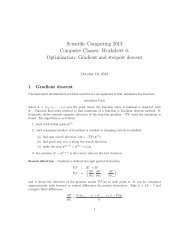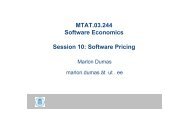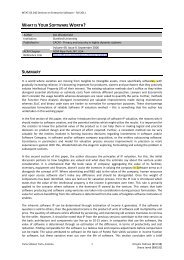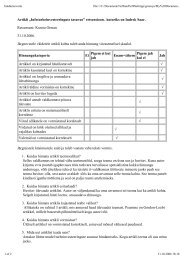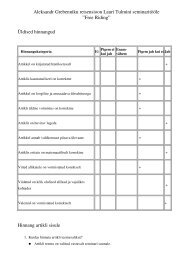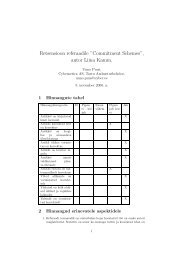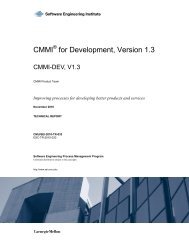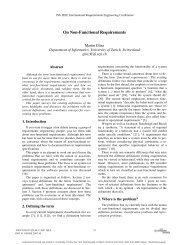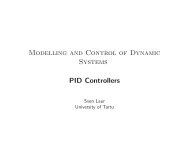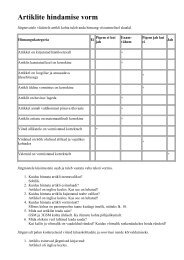Lab 5.5.1: Basic Spanning Tree Protocol
Lab 5.5.1: Basic Spanning Tree Protocol
Lab 5.5.1: Basic Spanning Tree Protocol
You also want an ePaper? Increase the reach of your titles
YUMPU automatically turns print PDFs into web optimized ePapers that Google loves.
CCNA Exploration<br />
LAN Switching and Wireless: STP <strong>Lab</strong> <strong>5.5.1</strong>: <strong>Basic</strong> <strong>Spanning</strong> <strong>Tree</strong> <strong>Protocol</strong><br />
Interface Role Sts Cost Prio.Nbr Type<br />
---------------- ---- --- --------- -------- --------------------------------<br />
Fa0/1 Root FWD 19 128.1 P2p<br />
Fa0/2 Altn BLK 19 128.2 P2p<br />
Step 2: Examine the output.<br />
The bridge identifier (bridge ID), stored in the spanning tree BPDU consists of the bridge priority, the system ID<br />
extension, and the MAC address. The combination or addition of the bridge priority and the system ID<br />
extension are known as the bridge ID priority. The system ID extension is always the number of the VLAN.<br />
For example, the system ID extension for VLAN 100 is 100. Using the default bridge priority value of 32768, the<br />
bridge ID priority for VLAN 100 would be 32868 (32768 + 100).<br />
The show spanning-tree command displays the value of bridge ID priority. Note: The “priority” value<br />
within the parentheses represents the bridge priority value, which is followed by the value of the system ID<br />
extension.<br />
Answer the following questions based on the output.<br />
1. What is the bridge ID priority for switches S1, S2, and S3 on VLAN 1?<br />
a. S1 _______<br />
b. S2 _______<br />
c. S3 _______<br />
2. Which switch is the root for the VLAN 1 spanning tree? ________________<br />
3. On S1, which spanning tree ports are in the blocking state on the root switch?<br />
_________________<br />
4. On S3, which spanning tree port is in the blocking state? _________<br />
5. How does STP elect the root switch? _________________________<br />
6. Since the bridge priorities are all the same, what else does the switch use to determine the root?<br />
________________________<br />
Task 5: Observe the response to the topology change in 802.1D STP<br />
Now let's observe what happens when we intentionally simulate a broken link<br />
Step 1: Place the switches in spanning tree debug mode using the command debug spanningtree<br />
events<br />
S1#debug spanning-tree events<br />
<strong>Spanning</strong> <strong>Tree</strong> event debugging is on<br />
S2#debug spanning-tree events<br />
<strong>Spanning</strong> <strong>Tree</strong> event debugging is on<br />
S3#debug spanning-tree events<br />
<strong>Spanning</strong> <strong>Tree</strong> event debugging is on<br />
Step 2: Intentionally shutdown port Fa0/1 on S1<br />
All contents are Copyright © 1992–2007 Cisco Systems, Inc. All rights reserved. This document is Cisco Public Information. Page 6 of 8



